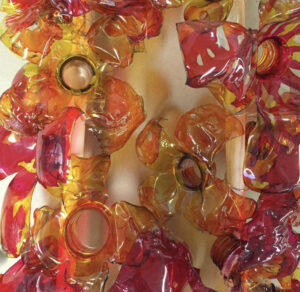Week 8 – Plastic is Everywhere
In the late 19th century, plastics emerged as clever alternatives, celebrated for their role in enabling middle-class growth and technological advancements in photography, film, and electrical applications. Although initially praised, plastics faced a decline, becoming synonymous with inauthenticity. Designers successfully revamped plastic’s image, aligning it with modernist beliefs. Fast forward to the 1970s, heightened environmental awareness shed light on plastic’s harmful impact.
Adapting to environmental concerns, chemical companies downplayed chemical talk. Today, plastics are emblematic of our synthetic mess and resource toll. Robert Callender’s ‘Plastic Beach’ vividly visualizes plastic debris, sparking contemplation on plasticity. Eco-building explores natural materials, ‘Thing-Materials’ like recycled tires, and energy-saving options.
Mark A. Miodownik passionately advocates for the reunion of material arts and sciences, emphasizing the enriching dialogue between creativity and scientific rigor. Meanwhile, Kate Franklin and Caroline Till present cutting-edge material approaches, injecting innovation into the discourse. This narrative intricately explores the interconnected nature of matter, using plastics as a compelling case study in grappling with material challenges and recalcitrance. The overarching theme goes beyond understanding materials; it calls for active engagement with the environmental impact, laying the groundwork for Environmental Futures — an immersive exploration into the intersection of time, hope, and design possibilities amid the ever-evolving dynamics between humans and their environment.
 Plastic creation by me. Photo by Christina Yang.
Plastic creation by me. Photo by Christina Yang.
This week’s workshop was inspiring, prompting me to spend a day at home doing this art project. I transformed plastic water bottles using scissors to shape them, cutting edges, and using red, orange, and yellow markers for a coluorful touch. Then, I used a lighter to give it a curved texture and secured everything with hot glue. Given the prevalence of plastic water bottles, I felt comfortably acquainted with the materials.
Working on this project was a lot of fun. I envision it as a stylish decor or accessory piece, and the best part is that I’ve taken a step towards upcycling by giving these bottles a new purpose beyond their initial use. The material “pushed back” when I got a cut from the sharp plastic edges. While I’m proud of this individual piece, scaling up the production would be labor-intensive, and I’m unsure if I would make more than ten. This experience has sparked a contemplation on the intricacies of working with unconventional materials and the art of upcycling. As I reflect on this creative journey, I’m reminded that every cut and challenge is a part of the story, making the final piece even more meaningful.
Reference list
Bennett, Jane. (2010) Vibrant Matter: a Political Ecology of Things. Durham Duke University Press.
Harkness, H. (2023) Theme 3_Lecture B [PDF], Materials and (new) Materialism: Bodies, Resources and Pollution. University of Edinburgh.